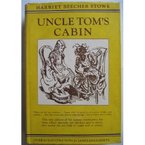The American Civil War Overview & Causes
Was the Civil War about Slavery or States Rights?
Yes. The Civil War was about states rights. The southern states wanted to be able to choose what their laws would be. The law or the "right" that they were most concerned about was slavery. So yes, they were worried about losing their rights, unfair taxes and tariffs and the ability for their states to control themselves, but they were mostly worried about slavery and the billions of dollars of income it brought to the south. Watch the video to the right to learn more.
Yes. The Civil War was about states rights. The southern states wanted to be able to choose what their laws would be. The law or the "right" that they were most concerned about was slavery. So yes, they were worried about losing their rights, unfair taxes and tariffs and the ability for their states to control themselves, but they were mostly worried about slavery and the billions of dollars of income it brought to the south. Watch the video to the right to learn more.
Terrific Additional Resources:
Mr.Nussbaum.com is a terrific site for kids to learn more about the Civil War. Also visit, The Civil War for 5th Graders.
You can also see a short movie giving an overview of the Civil War on BrainPop.
You can go on an interactive adventure with a Maryland slave here, to learn about life as a slave during the Civil War.
Civil War Overview
The Civil War was a war that was fought to keep the United States as a single country rather than becoming two, but it was a very costly war. More Americans were killed in the Civil War than in the Revolutionary War, World War I and World War II--COMBINED. Watch the video to the right to get a better overview of the Civil War.
The Civil War was a war that was fought to keep the United States as a single country rather than becoming two, but it was a very costly war. More Americans were killed in the Civil War than in the Revolutionary War, World War I and World War II--COMBINED. Watch the video to the right to get a better overview of the Civil War.
Uncle Tom's Cabin

This classic book, written by Harriet Beecher Stowe made the horrors of slavery come alive to its readers. The book was originally published in 1853. When Abraham Lincoln met Ms. Stowe he said, "So you're the little lady who started this big war." Uncle Tom's Cabin was one of the many causes of the Civil War, because it outraged people about the horrors of slavery. You can click here to access an abbrieviated version of the story. The story contains a lot of dialect and racial references, which we will talk about in class. You can also click here to access an .MP3 file, which will read the story to you (this version cuts out much of the dialect).
John Brown's Raid on Harper's Ferry
John Brown took a different route to ending slavery then Harriet Beecher Stowe. He wanted action. His plan was to raid a military armory at Harper's Ferry in Virginia, and then take the weapons and give them to slaves, so they could fight for their freedom. He and his whole raiding party were captured. He was convicted of treason and hanged on December 2, 1859. At first people thought he was crazy, but it got people talking about the horrors of slavery. For more details about John Brown's Raid click here. There was an old folk song which Civil war soldiers sang about John Brown, which eventually became part of the "Battle Hymn of the Republic." To learn more about the song and hear it sung, click here.
Election of Abraham Lincoln
Uncle Tom's Cabin got people enraged about slavery. John Brown's attempted revolt brought more attention to the abolitionist cause, but the final straw was the election of Abraham Lincoln as President in 1860. The southern states, led by South Carolina, succeeded or left the United States and formed their own country (Confederate States of America) because they feared Lincoln would make slavery illegal and they did not have enough votes in congress to stop any such law from passing. You can learn more about the election of Lincoln and its effects by watching the video to the right.
Uncle Tom's Cabin got people enraged about slavery. John Brown's attempted revolt brought more attention to the abolitionist cause, but the final straw was the election of Abraham Lincoln as President in 1860. The southern states, led by South Carolina, succeeded or left the United States and formed their own country (Confederate States of America) because they feared Lincoln would make slavery illegal and they did not have enough votes in congress to stop any such law from passing. You can learn more about the election of Lincoln and its effects by watching the video to the right.
